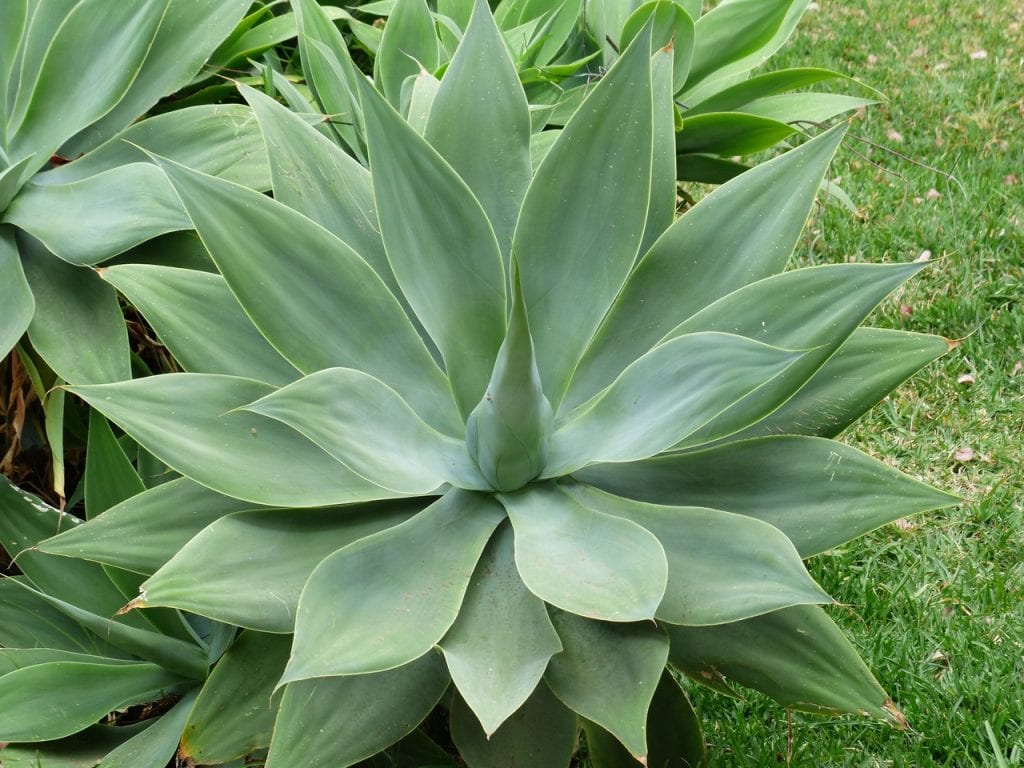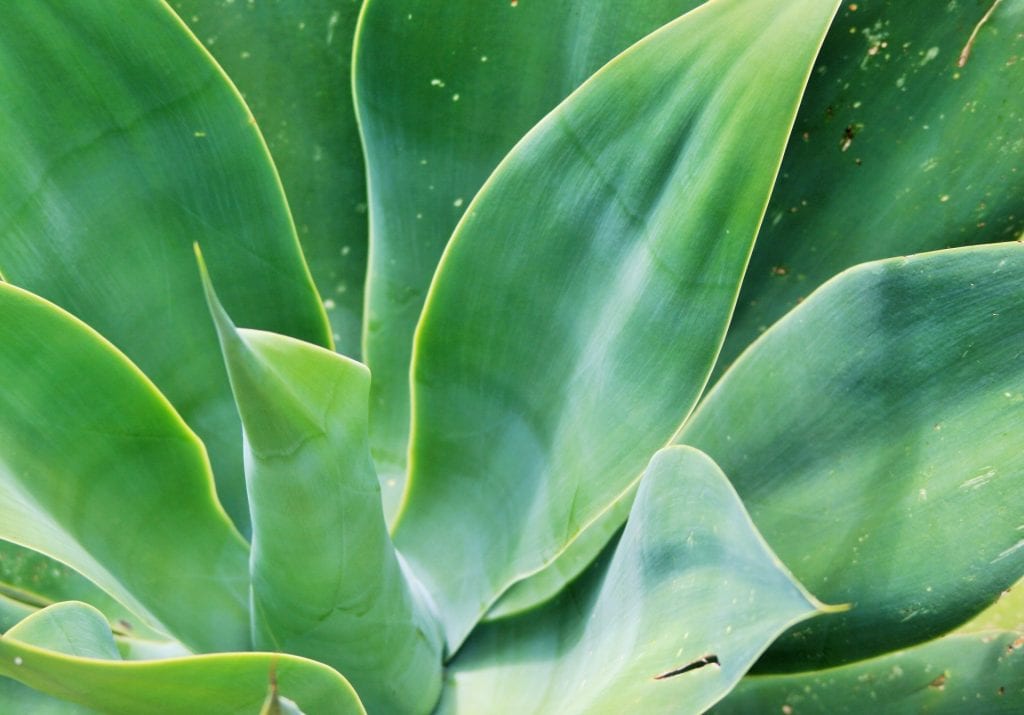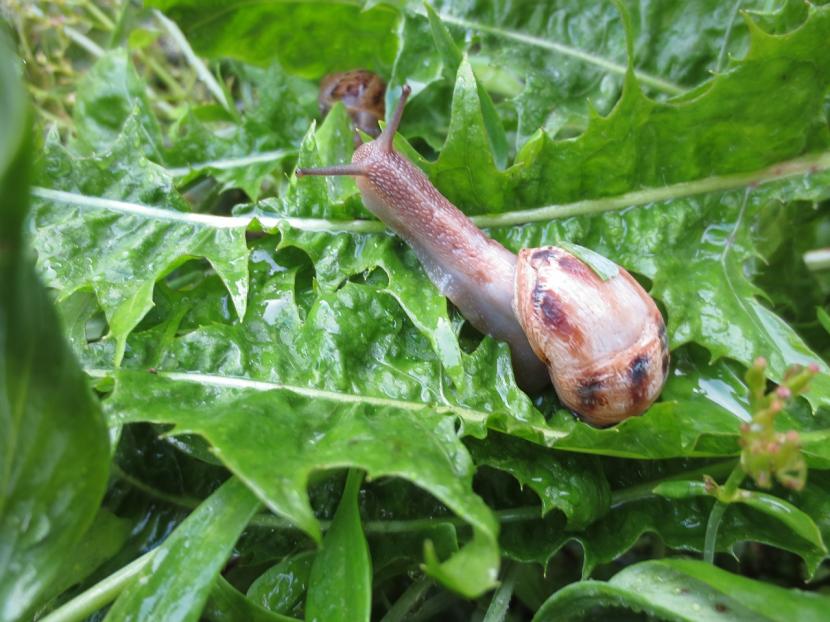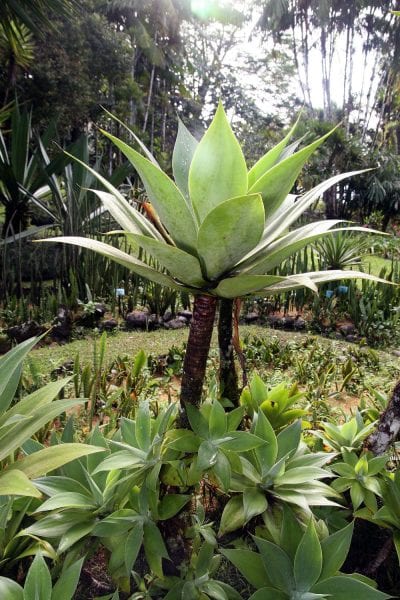
If you would like to have a low maintenance garden with few thorny plants, one of the ones I recommend the most is the species Agave attenuata. This beautiful succulent is not that it has few thorns, it is that it does not have one, which is totally harmless.
It is perfect to have in any sunny corner, if possible where it can be exposed to the light of the star king throughout the day. But you should know that it does not feel bad to be in semi-shadow either.
Origin and characteristics of Agave attenuata

Image - Wikimedia / H. Zell
It is known as dragon agave, attenuated agave or swan neck, and it is an endemic plant of Jalisco, in eastern Mexico. It can reach a height of up to 150 centimeters, with a stem that over time remains visible, as the leaves fall. These are arranged in rosettes, and are ovate, gray to yellow-green in color, and with a size of 70cm in length by 12-16cm in width.
The flowers are grouped in yellow-green clusters and can grow to 3 meters in height.. After withering, like the rest of agaves, the specimen dies, so this species is considered to be a monocarpic plant. Its fruits are capsules, but they are not usually seen as they tend to fall before they finish ripening.
What are their cares?
Caring for the Agave attenuata is very simple, since you could almost say that it takes care of itself. Still, it's important to consider your needs so that no problems arise:
Location
It is a plant that will grow better outdoors, in a sunny place. Now, as we said at the beginning, it can tolerate some shade.
If you want to have it indoors, you must place it in a very bright room; that is, in one where you can see well during the day without the need to resort to electric light.
Earth

- Garden: grows on light, sandy soils with good drainage. If the one you have does not meet these characteristics, make a planting hole of at least 50cm x 50cm, and fill it with pumice (for sale here).
- Flower pot: you can use quality soil for cacti and succulents (on sale here), pumice or even universal substrate (for sale here) mixed with perlite (for sale here) in equal parts.
Irrigation
Irrigation will be rather scarce. Bill Agave attenuata it resists drought quite well, so with about two weekly waterings during the summer and one every ten or fifteen days the rest of the year will be fine.
The only thing you have to bear in mind is that if your climate is humid, that is, if it rains frequently and / or if the relative humidity is high - above 50% - the frequency of irrigation will be less because the soil or substrate it will take longer to dry.
Subscriber
From early spring to late summer It will be highly recommended to fertilize it from time to time -once a month or every fifteen days- with a fertilizer for cacti and succulents (for sale here) following the instructions specified on the package.
Multiplication
El Agave attenuata it multiplies by suckers and by seeds (rarer) in spring, following this step by step:
Young
As it is a plant from which several shoots sprout from the stem, they can be separated when they are of a size that allows them to be handled well. Separate them with a previously sanitized serrated knife, and then plant them in individual pots with pomx or other sandy substrate placed outside, in semi-shade.
Seeds
The seeds are sown in seedbeds (pots, seedling trays, ...) with substrate for seedbeds for example (for sale here). Bury them very little, enough so that they are not exposed directly to the sun, and water.
Then it will only remain to place the seedbed outside, in semi-shade, and keep the substrate always humid but not flooded. If all goes well they will germinate in about 5-10 days.
Pests and diseases Agave attenuata
Maybe some cochinealBut nothing that can't be removed with a brush soaked in drugstore alcohol. Of course, you must be careful with snails and slugs, because they enjoy eating young leaves.

Planting or transplanting time
En spring, when the frosts have passed.
Rusticity
Resists weak frosts up to -2ºC if they are punctual and of short duration. But it prefers milder climates.
What uses is it given?

Image - Wikimedia / David J. Stang
El Agave attenuata used as an ornamental plant. The color of its leaves and the size of its flower clusters make it attract a lot of attention. In addition, it can be had near swimming pools, and of course also in rockeries or in pots.
Its maintenance is not complicated and, although you live in an area where significant frosts occur in winter, you can enjoy it indoors until spring returns.
What did you think of this species of agave?
Thank you very much, I searched a lot until I found this beautiful page, I have many plants for suckers, BUT now it has flowered and I do not want to miss this opportunity to multiply it
Hi Luis.
First, we are glad to know that you like the website 🙂
And yes, if it has flowered, take advantage and separate the suckers to have new plants.
A greeting.
Hi there!! I wanted to know its final size, I read that it reaches 1,5m in height, but I would like to know its final diameter. I would like to use it in a flower bed but I think it grows too big. It grows fast? And if possible, would you know of a similar plant that doesn't grow much? Thank you very much!! I love the page, I always use it. Cheers!
Hello Francisco.
To tell you the truth, the largest specimen I've seen, I saw it on the Internet. I couldn't tell you what it measured because it didn't indicate it, but I estimate that it was about 60 centimeters wide.
It does not grow very fast, I would even say that it is rather slow. But if you want a smaller plant, have you thought about some Hesperaloe? Or if you like agaves, the Agave victoria-reginae A. attenuata is much smaller.
We are glad to know that you like the website 🙂
A greeting!